The New Zealand Tech Alliance is a group of independent technology associations from across New Zealand that work together to ensure a strong voice for technology.
Visit Tech Alliance

The New Zealand Tech Alliance is a group of independent technology associations from across New Zealand that work together to ensure a strong voice for technology.
Visit Tech Alliance
Every time I scan into my local supermarket or café, I wonder about the data that is being collected, and all the interesting and insightful research that is being produced from this precious data. One such example is from our members at Abbley, who created a map plotting the locations of interest of COVID-19, which is updated every five minutes from the Ministry of Health’s database.
However, as I was watching The Project last week, there was an interesting piece on “Where are we catching COVID?” This immediately piqued my interest as I was hoping to hear evidence-based answers to this most pertinent question.
I was disappointed to learn the Ministry of Health was unable to provide a satisfactory answer to this question – issuing this statement in response: “For most cases of COVID-19, contract tracers cannot definitively determine where a person contracted COVID-19. For this reason, the contact tracing platform does not record confirmed transmission locations, even when a case is linked with an exposure event or a household.”
It is true the tracer app cannot pinpoint exactly where a person caught the virus, but with the amount of data that is collected daily (as of Wednesday 10 Nov, there have been over 489,880,995 total poster scans), surely we can determine the most likely locations and share that knowledge?
With the rates of vaccinations coming closer to the coveted 90%, we need to become more prepared to understand these locations in an Aotearoa context, and to make better decisions to keep ourselves and our loved ones healthy.
Location-based technology has, for some time now, been employed as a data-feeder – capturing data that can tell a story about a specific place, at a specific time. However, what is the purpose of capturing this data if it is not collated, analysed, and used to its fullest potential in conjunction with other tech?
With that in mind, the LocationTech team has been examining the future of location technology and intelligence. What’s clear to us, and probably many of our readers, is that locationtech no longer functions in siloed form.
“the future of LocationTech lies in its utility and potency as an enabling tech used in collaboration with other technology.”
Pertinent examples of collab in action include tech developments from Baidu, who have created AI mapping systems that allow epidemiologists to gain real-time insights on the spread of COVID-19. In practice, this enables hospitals to prepare and respond to case surges at specific locations in advance.
Likewise, deep learning algorithms, location-based data and online behaviour monitoring (searches and social media posts) are being used together to detect outbreaks as and where they occur. For more information on this development take a look at this article and others from GeoSpatial World.
In other news, LocationTech would like to congratulate our members at Critchlow Geospatial for winning the Location-based Services Category at the Geospatial World Innovation Awards for their SwitchMyFleet solution. The awards were announced at the Geospatial World Forum 2021 gala dinner in Amsterdam and show that New Zealand is on the map for location-based technological innovation and development.
“SwitchMyFleet solution is a powerful, but completely free, online evaluation tool for businesses considering switching their commercial vehicle fleet to electric power”
I hope you are all staying safe, looking after yourselves and your loved ones as we come toward the closing stages of 2022. As always, if you are interested in getting more involved with LocationTech, reach out to me at alison.mackie@techalliance.nz.
Ngā mihi
Alison Mackie
Community Manager